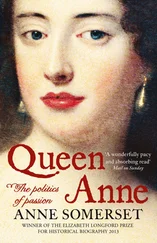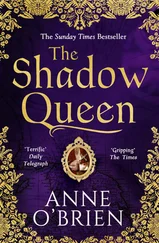Маргарет Олифант - Historical Characters in the Reign of Queen Anne
Здесь есть возможность читать онлайн «Маргарет Олифант - Historical Characters in the Reign of Queen Anne» — ознакомительный отрывок электронной книги совершенно бесплатно, а после прочтения отрывка купить полную версию. В некоторых случаях можно слушать аудио, скачать через торрент в формате fb2 и присутствует краткое содержание. Жанр: foreign_prose, История, foreign_edu, foreign_antique, на английском языке. Описание произведения, (предисловие) а так же отзывы посетителей доступны на портале библиотеки ЛибКат.
- Название:Historical Characters in the Reign of Queen Anne
- Автор:
- Жанр:
- Год:неизвестен
- ISBN:нет данных
- Рейтинг книги:3 / 5. Голосов: 1
-
Избранное:Добавить в избранное
- Отзывы:
-
Ваша оценка:
- 60
- 1
- 2
- 3
- 4
- 5
Historical Characters in the Reign of Queen Anne: краткое содержание, описание и аннотация
Предлагаем к чтению аннотацию, описание, краткое содержание или предисловие (зависит от того, что написал сам автор книги «Historical Characters in the Reign of Queen Anne»). Если вы не нашли необходимую информацию о книге — напишите в комментариях, мы постараемся отыскать её.
Historical Characters in the Reign of Queen Anne — читать онлайн ознакомительный отрывок
Ниже представлен текст книги, разбитый по страницам. Система сохранения места последней прочитанной страницы, позволяет с удобством читать онлайн бесплатно книгу «Historical Characters in the Reign of Queen Anne», без необходимости каждый раз заново искать на чём Вы остановились. Поставьте закладку, и сможете в любой момент перейти на страницу, на которой закончили чтение.
Интервал:
Закладка:
To us the unfailing vivacity and spirit of the woman, the dauntless stand she makes, her determination not to be overcome, make her appearance always enlivening; and art could not have designed a more complete contrast than that of the homely figure by her side, with appealing eyes fixed upon her, a little bewildered, not always quick to understand—a woman born for other uses, but exposed all her harmless life to the fierce light that beats upon a throne. For her part, she has no defense to make, no word to say; let them spend all their jibes upon her, Anne knows no reply. Her slow understanding and want of perception give her a certain composure which in a queen answers very well for dignity; yet there is something whimsically pathetic, pitiful, incongruous in the fate which has placed her there, which can scarcely fail to soften the heart of the spectators.
The tragedy of Anne’s life, unlike that of her friend, had no utterance, and there was nothing romantic in her appearance or surroundings to attract the lovers of the picturesque. Yet in the blank of her humble intellect she discharged not amiss the duties that were so much too great for her; and if she was disloyal to her friend in the end, that betrayal only adds another touch of pathos to the spectacle of helplessness and human weakness. It is only the favored few of mankind who are wiser and better, not feebler and less noble, as life draws toward its end.
Anne was, like Elizabeth, the daughter of a subject. Her mother, Anne Hyde, the daughter of the great Clarendon, though naturally subjected to the hot criticism of the moment on account of that virtue which refused anything less from her prince than the position of wife, was not a woman of much individual character, nor did she live long enough to influence much the training of her daughters. Historians have not hesitated to sneer at the prudence with which this young lady secured herself by marriage, when so many fairer than she were less scrupulous—a reproach which is somewhat unfair, considering what would certainly have been said of her had she not done so. Curiously enough, her own father, whether in sincerity or pretense, seems at the moment to have been her most severe critic, exculpating himself with unnecessary energy from all participation in the matter, and declaring that if it were true “the king should immediately cause the woman to be sent to the Tower” till Parliament should have time to pass an act cutting off her head. It would appear, however, from the contemporary narratives of Pepys and Evelyn that he was not so bad as his words, for he seems to have supported and shielded his daughter during the period of uncertainty which preceded the acknowledgment of her marriage, and to have shared in the general satisfaction afterward. But this great marriage was not of much advantage to her family. It did not hinder Clarendon’s disgrace and banishment, nor were his sons after him anything advantaged by their close relationship to two queens.
The Duchess of York does not seem to have been remarkable in any way. She is said to have governed her husband; and she died a Roman Catholic,—the first of the royal family to lead the way in that fatal particular: but did not live long enough to affect the belief or training of her children.
There was an interval of three years in age between Mary and Anne. The eldest, Mary, was like the Stuarts, with something of their natural grace of manner; the younger was a fair English child, rosy and plump and blooming; in later life they became more like each other. But the chief thing they inherited from their mother was what is called in fine language, “a tendency to embonpoint,” with, it is said, a love of good eating, which helped to produce the other peculiarity.
The religious training of the princesses is the first thing we hear of them. They were put under the charge of a most orthodox tutor, Compton, Bishop of London, with much haste and ostentation—their uncle, Charles II., probably feeling with his usual cynicism that the sop of two extra-Protestant princesses would please the people, and that the souls of a couple of girls could not be of much importance one way or another. How they fared in respect to the other features of education is not recorded. Lord Dartmouth, in his notes on Bishop Burnet’s history, informs us that King Charles II., struck by the melodious voice of the little Lady Anne, had her trained in elocution by Mrs. Barry, an actress; while Colley Cibber adds that she and her sister were instructed by the well-known Mrs. Betterton to take their parts in a little court performance when Anne was but ten and Mary thirteen; but whether these are two accounts of the same incident, or refer to distinct events, seems doubtful.
The residence of the girls was chiefly at Richmond, where they were under the charge of Lady Frances Villiers, who had a number of daughters of her own, one of whom, Elizabeth, went with Mary to Holland, and was, in some respects, her evil genius. We have, unfortunately, no court chronicle to throw any light upon the lively scene at Richmond, where this little bevy of girls grew up together, conning their divinity, whatever other lessons might be neglected; taking the air upon the river in their barges; following the hounds in the colder season, for this robust exercise seems to have been part of their training. When their youthful seclusion was broken by such a great event as the court mask, in which they played their little parts,—Mrs. Blogge, the saintly beauty, John Evelyn’s friend, Godolphin’s wife, acting the chief character, in a blaze of diamonds,—or that state visit to the city when King Charles in all his glory took the girls, his heirs, with him, no doubt the old withdrawing-rooms and galleries of Richmond rang with the story for weeks after. Princess Mary, her mind perhaps beginning to own a little agitation as to royal suitors, would have other distractions; but as to the Lady Anne, it soon came to be her chief holiday when the young Duchess of York, her stepmother, came from town in her chariot, or by water, in a great gilded barge breasting up the stream, to pay the young ladies a visit. For in the train of that princess was the young maid of honor, a delightful, brilliant espiègle , full of spirit and wilfulness, who bore the undistinguished name of Sarah Jennings, and brought with her such life and stir and movement as dispersed the dullness wherever she went.
There is no such love as a young girl’s adoration for a beautiful young woman, a little older than herself, whom she can admire and imitate and cling to, and dream of with visionary passion. This was the kind of sentiment with which the little princess regarded the bright and animated creature in her young stepmother’s train. Mary of Modena was herself only a few years older than her stepchildren. They were all young together, accustomed to the perpetual gaiety of the court of Charles II., though, let us hope, kept apart from its license, and
no shadow of fate seems to have fallen upon the group of girls in their early peaceful days. Anne in particular would seem to have been left to hang upon the arm and bask in the smiles of her stepmother’s young lady in waiting at her pleasure—with many a laugh at premature favoritism. “We had used to play together when she was a child,” said the great duchess long after. “She even then expressed a particular fondness for me; this inclination increased with our years. I was often at court, and the princess always distinguished me by the pleasure she took to honor me preferably to others with her conversation and confidence. In all her parties for amusement, I was sure by her choice to be one.”
Mistress Sarah was one of the actors in the mask above referred to; she was in the most intimate circle of the Duke of York’s household, closely linked to all its members, in that relationship, almost as close as kindred, which binds a court together.
Читать дальшеИнтервал:
Закладка:
Похожие книги на «Historical Characters in the Reign of Queen Anne»
Представляем Вашему вниманию похожие книги на «Historical Characters in the Reign of Queen Anne» списком для выбора. Мы отобрали схожую по названию и смыслу литературу в надежде предоставить читателям больше вариантов отыскать новые, интересные, ещё непрочитанные произведения.
Обсуждение, отзывы о книге «Historical Characters in the Reign of Queen Anne» и просто собственные мнения читателей. Оставьте ваши комментарии, напишите, что Вы думаете о произведении, его смысле или главных героях. Укажите что конкретно понравилось, а что нет, и почему Вы так считаете.












